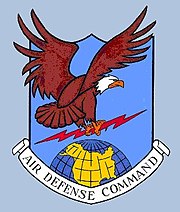Finland Station (Russian: ФинлÑÌндÑкий вокзаÌл, Finlyandsky vokzal) (IATA: FVS), also known as the Finlyandsky station, is a railway station in St. Petersburg, Russia, handling transport to northern destinations including Helsinki and Vyborg.
The station is most famous for having been the location where Vladimir Lenin returned to Russia from exile in Switzerland on 3 April 1917 (N.S.), ahead of the October Revolution.
History

Finland Station was built by Finnish State Railways as the eastern terminus of the Riihimäki-Saint Petersburg railroad. It was designed by Swedish architects and opened in 1870. The station formerly contained a special pavilion for Russian royalty.
Russian Revolution
The station was owned and operated by Finnish railways until early 1918, when the last train, carrying station personnel and equipment, as well as some of the last Finns escaping revolutionary Russia, left for Finland. Later, ownership of the station was exchanged for Russian property in Finland, including the Alexander Theatre in Helsinki.
The station is famously known for the arrival of Vladimir Lenin by train from Germany on 3 April 1917 to start the October Revolution. The event is commemorated by the Soviet statue of Lenin dominating the square in front of the station. This event is also referred to in the title of Edmund Wilson's book To the Finland Station (1940), a well-known study of revolutionary thought.
After the turmoil of the July Days, when workers and soldiers in the capital clashed with government troops, Lenin had to flee to Finland for safety, to avoid arrest. Lenin secretly returned from Finland disguised as a railway worker and protected by Eino Rahja and Alexander Shotman on 9 August 1917. Both times Lenin crossed the Russian-Finnish border on the engine #293 driven by Finnish engineer Hugo Jalava (Ð"уго Ðрикович Ялава). The steam locomotive was donated by Finland to the Soviet Union in 1957, and is now installed as a permanent exhibit at one of the platforms on the station.
Siege of Leningrad
During the Siege of Leningrad in 1941â€"43, the Finland Station was the only Leningrad rail terminus that remained in use. The railway would connect Leningrad with a station near the western shore of Lake Ladoga, to which supplies from the non-occupied parts of the Soviet Union would arrive from across the lake, by boat or over the lake ice, via the so-called Road of Life.
Reconstruction
In the 1950s, the old station building was demolished and replaced with a new one, inaugurated in 1960. The turreted building is decorated with sculptures glorifying the October Revolution and incorporates a portico preserved from the original 1870 edifice.
Damage to Lenin's statue
Before dawn on Wednesday 1 April 2009 a bomb exploded in the statue of Lenin, creating an 80Â cm-100Â cm hole in the back of the statue.
Trains and destinations
Trains from Helsinki arrive at the station, except for a transit train to Moscow through Ladozhsky railway station. The station is also a part of high-speed rail line between Saint Petersburg and Helsinki (see Karelian Trains).
The main entrance to the metro station Ploshchad Lenina is in the main building of Finland Station.
Long distance
Other destinations
High-speed rail
Suburban destinations
Suburban commuter trains (elektrichka) connect Finlyandsky station with the towns of Sestroretsk, Zelenogorsk, Primorsk, Vyborg and Priozersk.
Route maps

See also

- Riihimäki â€" Saint Petersburg Railway
- Saint Petersburg-Hiitola railway
- To the Finland Station
References

External links

Media related to Finlyandsky Rail Terminal at Wikimedia Commons

